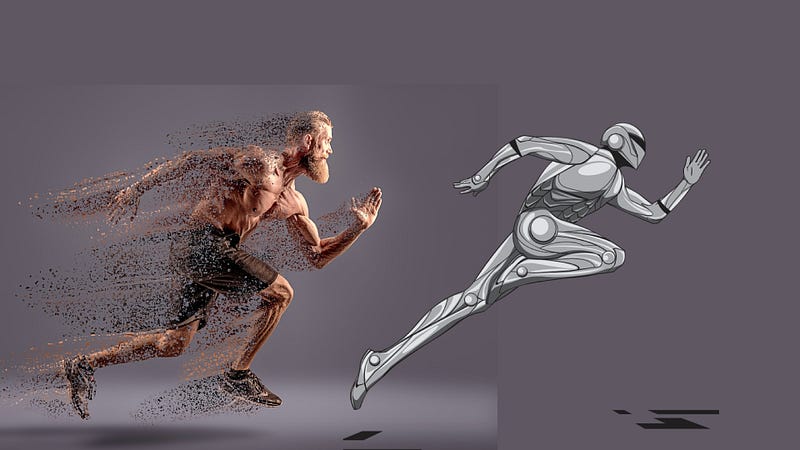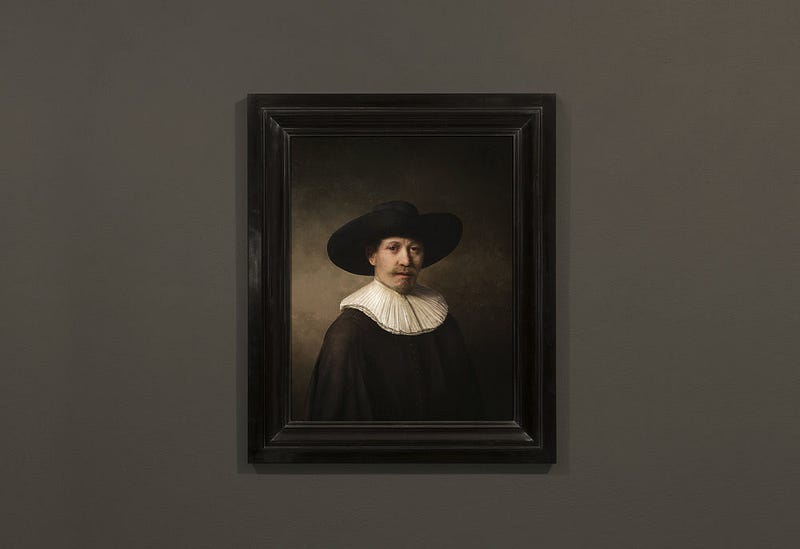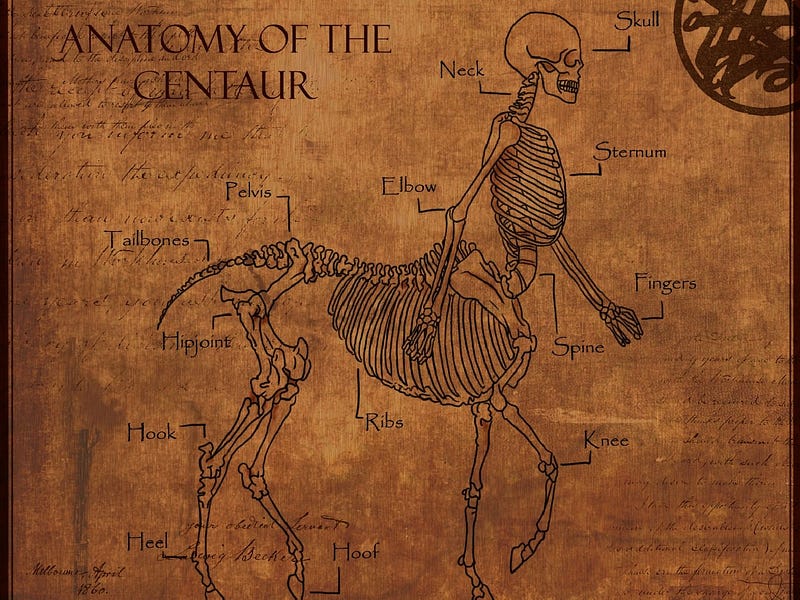
“We shape our tools and thereafter our tools shape us” — Marshall McLuhan
“Introducing my robot writing partners that will join me on tour this year.” — Ólafur Arnalds
I went to see the phenomenal Ólafur Arnalds play in Dublin’s National Concert Hall recently. For certain pieces, Arnalds plays his piano alongside a set of what he dubs “robot writing partners” with no”body” playing them. Arnalds has created specially programmed algorithms, which trigger the ghost pianos as he plays his central piece. What is really fascinating is that he says the use of technology has changed his creative process. In the past, he would have played a C note for example and then decided what note best accompanies that C, now he lets the algorithm react to the note that he plays. The algorithmic pianos play unexpected sequences that are in perfect harmony with the note that Arnalds triggers. Arnalds says it alters the creative process and helps him create ideas that he would never have created otherwise, it keeps his creativity fresh and novel. This is an example of AI empowering new forms of creativity and new progress and this is an exemplar of what technology can do for humanity — as long as we make the right decisions on the road to progress.
The potential opportunities that artificial intelligence and technology presents are immense. There is a high probability that the exponential growth of such technologies will render many of us unemployed and unemployable. Ai will profoundly change humanity and society in ways that we cannot yet imagine. As author and expert on AI Calum Chace shares on this week’s innovation show, Artificial intelligence can turn out to be the best thing ever to happen to humanity, making our future wonderful almost beyond imagination, but only if we address head-on the challenges that it will raise.
Progress and change will not stop and relinquishment (stopping AI development) is not an option, the financial opportunities and competitive advantages that AI offers are irresistible. AI already exists in many forms and untangling AI would be a disaster.
AI will continue to progress at an increasingly faster pace, the genie is out of the bottle. While we speculate and debate the many possible directions that AI can take us, one thing is certain, we are better running with AI than away from it. That is the focus of today’s Thursday Thought.
Blurring the Boundaries of Art and Technology
When commentators discuss the skills and professions that are safe from artificial intelligence, creativity is considered the last bastion, safe from AI. Counter arguments would suggest this is not true.
In 2016, a team consisting of two Dutch Galleries, developers from Microsoft and Bas Korsten, the creative director from the advertising firm J Walter Thompson created a “New Rembrandt”. The team analysed 346 paintings and 150 gigabytes of digitally rendered graphics to create a brand new painting using 3D printing and artificial intelligence.
I share this story to highlight just one of the many creative pursuits of researchers using AI. Classical music by the great masters is also being created using AI and machine learning.
But does it really feel like art?
Think for a moment of what a piece of art truly represents? Art is hugely subjective, for me, it captures the emotional state of the artist. It captures the creative journey of the artist. When you observe a piece of art, you are considering the evolution of the creator. The value is not simply in the art but in the story behind the art. Art should both capture the emotion of the creator and provoke emotion in the observer.
Now consider a piece of art created by a “robot” alone, it lacks humanity, it lacks the pain and pleasure of human existence. However, if — like Ólafur Arnalds and his “robot pianos” — technology empowered new levels of creativity, the emotion would still be present, but augmented, enhanced, progressed.
Ai and humanity together are stronger than Ai instead of humanity or humanity instead of Ai, this will not be the case for all jobs in the future, but it will be for some. (If you are interested in this, I highly recommend the latest book by our innovation show guest Calum Chace).
Centaurs
“Best case scenario, we effectively merge with AI.” Elon Musk
Garry Kasparov, the chess master who famously lost to Deep Blue in 1997 claims that a human teamed up with artificial intelligence would beat an ai chess opponent. The human would use creativity and unexpected moves, which combined with the linear approach of the computer is extremely effective. Kasparov labelled the concept of humans and machines working together “Centaurs” after the Greek mythological creature with the upper body of a human and the lower body and legs of a horse.
Modern-day medicine uses neural networks and algorithms to detect cancer in combination with a human doctor. Computers can identify patterns that go unnoticed to many humans. Just like our Rembrandt example above, where researchers “fed” the machine 346 paintings and digitally rendered graphics so it could learn, cancer researchers “train” the machine by “feeding” it samples of cancer cells so it learns and recognises patterns. Researchers believe that creating such algorithms will lead to quicker diagnosis, reduce the margins of human error and maximise the time doctors can afford patients.
Whatever about a centaur, the human will evolve, as will the roles we play in society. Not all jobs will survive and not all outlooks are so positive. AI expert Dr Vivienne Ming believes human lawyers and many other professions are about to be hugely impacted by AI. In a recent competition at Columbia University between human lawyers and their artificial counterparts, both had to read a series of non-disclosure agreements and identify loopholes in them.
“The AI found 95 per cent of them and the humans 88 per cent, but the human took 90 minutes to read them. The AI took 22 seconds.” Game, set and match to the robots.”
Interesting times ahead.
This week’s innovation show is EP 146: Artificial Intelligence and the Two Singularities with Calum Chace
“Optimism, like pessimism, is a bias, and to be avoided. But summoning the determination to rise to a challenge and succeed is a virtue.” — Calum Chace
Calum argues that in the course of this century, the exponential growth in the capability of AI is likely to bring about two “singularities” — points at which conditions are so extreme that the normal rules break down.
The first is the economic singularity when machine skill reaches a level that renders many of us unemployable and requires an overhaul of our current economic and social systems.
The second is the technological singularity, when machine intelligence reaches and then surpasses the cognitive abilities of an adult human, relegating us to the second smartest species on the planet.
These singularities will present huge challenges, but this he argues that we can meet these challenges and overcome them. If we do, the rewards could be almost unimaginable.
Artificial intelligence can turn out to be the best thing ever to happen to humanity, making our future wonderful almost beyond imagination. But only if we address head-on the challenges that it will raise.
We discuss:
- The Terminology
- Technological Singularity
- Economic Singularity
- Exponential Change
- Artificial General Intelligence
- The AI race
- Technological Joblessness
- Universal Basic Income
- Impact on Society
- What is being done
- The Gods and the Useless
- Transhumanism
- Augmented Humanity
- Centaurs
- Privacy Concerns
Have a listen:
Soundcloud https://lnkd.in/gBbTTuF
Spotify http://spoti.fi/2rXnAF4
iTunes https://apple.co/2gFvFbO
More about Calum here;
http://www.pandoras-brain.com/
and the book here:
https://www.amazon.co.uk/gp/product/0815368534/ref=dbs_a_def_rwt_bibl_vppi_i6
Tags: Singularity, Technological Singularity, Economic Singularity, Exponential Change, Artificial General Intelligence, Artificial Intelligence. AI, Technological Joblessness, UBI, Universal Basic Income, Transhumanism, Augmented Humanity, Centaurs, Privacy, Data, Machine Learning

